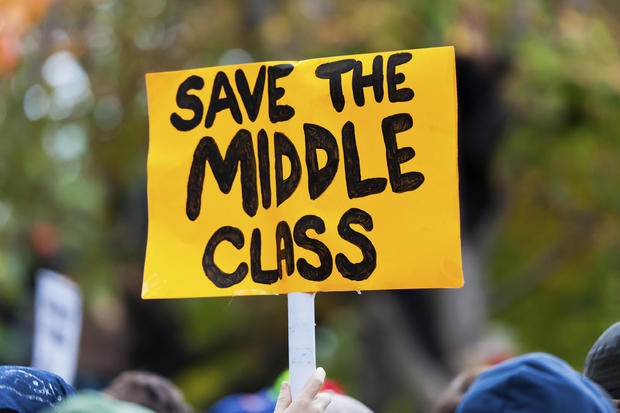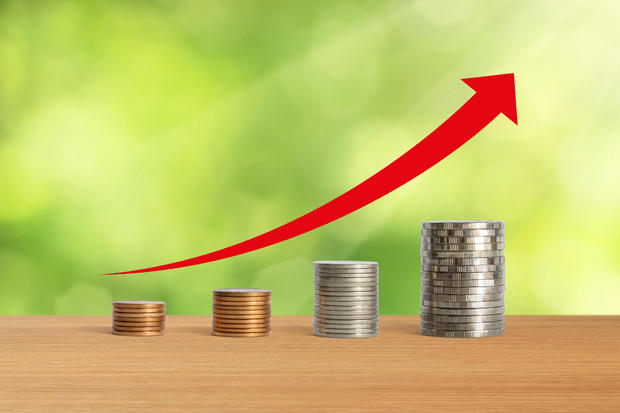5 signs you're no longer middle class
America's middle class isn't what it used to be.
The share of Americans who are considered in that group shrank from 1991 to 2010, according to a new report from the Pew Research Center that covers this 20-year period. At the beginning of the 1990s, 62 percent of Americans qualified for middle-class status, a share that had dropped to 59 percent two decades later.
Even though everyone likes to consider themselves middle class, America has always been a socially and economically stratified society. Recent economic trends are creating even greater divides between the classes, such as the fast income growth among America's top earners. That's pushing more people out of the middle class because their incomes are too high for that category.
"The shift out of the middle class is a sign of economic progress, irrespective of changes in household incomes overall," Pew said in its report. "This is because the outward shift is accompanied by a move up the income ladder, into the upper-income tier, in all countries with a shrinking middle class."
Other countries experiencing shrinking middle classes during the same period include seven of Western Europe's 11 countries, including Germany, Finland, Denmark and Spain. The middle class grew in only four Western countries Pew surveyed: the Netherlands, France, Ireland and the U.K.
What does it mean to be in the middle class? Some would say it's a state of mind, but Pew considers it to include households with between two-thirds to double the national median disposable household income.
On the flip side, some Americans are falling out of the middle class due to stagnant or falling income, as well as increased income volatility. About one-third of middle-income Americans spend at least one month of the year in poverty, the U.S. Financial Diaries found in a recent groundbreaking study about the financial stresses mid- and low-income Americans feel.
The country with the largest middle class is Denmark, where eight out of 10 households fall into the category.
Read on about the indicators that may show whether you're no longer middle class.
Your income has slipped below $35,300
At the bottom end, American households must earn at least $35,294 to be considered middle class, according to Pew's analysis. If your income has slipped below that, you've joined the millions of households that live in poverty or are lower-income.
The ranks of the poor are growing. Pew found the share of lower-income households rose from 25 percent in 1991 to 26 percent in 2010.
Even though an income of about $35,300 is considered middle class, it doesn't guarantee the trappings of a typical middle-class life. For one, that's not enough to scrape by in many of the biggest U.S. cities. Under the expanded federal guidelines, a family of four earning about $34,000 would qualify for Medicaid, the health care program for poor families.
Your income is higher than $105,881
Goodbye middle class, hello upper middle class.
Once income climbs above $105,881, Americans are no longer part of the middle class, according to Pew's calculations. It's an increasingly common phenomenon as Pew found the share of upper-income families rose from 13 percent in 1991 to 15 percent in 2010.
Still, a six-figure income may not always guarantee an upper-middle-class lifestyle. Families in the San Francisco area who earn more than $100,000 are actually considered low-income by the federal government, thanks to the region's high cost of living.
You're enjoying faster income growth
Income for the wealthy is growing faster than for the middle-class or lower-income brackets.
Upper-income Americans enjoyed a 13 percent increase in income from 1991 to 2010, Pew found. By comparison, the middle-class saw 9 percent growth in the same period, or about one-third below that of their wealthier compatriots.
You have more disposable income
The middle class isn't only shrinking, but its share of disposable income is growing smaller, Pew found.
All the benefits are accruing to the upper-income tier, who now control 34 percent of the country's total disposable income, even though they make up just 15 percent of total U.S. households. By comparison, the middle class saw its share of disposable income slip to 56 percent from 62 percent over the study's two-decade period.
Lower-income Americans are holding steady at 10 percent of the country's disposable income.
You're not as stressed by health care costs
The middle class is increasingly feeling the strain of rising health care costs, a Wall Street Journal study found.
Many poor families qualify for Medicaid, while upper-income Americans have no trouble paying for their coverage and often have generous employer-based plans. Middle-class families, on the other hand, apportion almost 9 percent of their spending to cover health care costs, more than high-income families.
As one economist told The Journal, the U.S. is becoming "a story of three markets," in which middle-income families are increasingly squeezed by rising medical costs while the lower and upper classes are better equipped to handle them.





